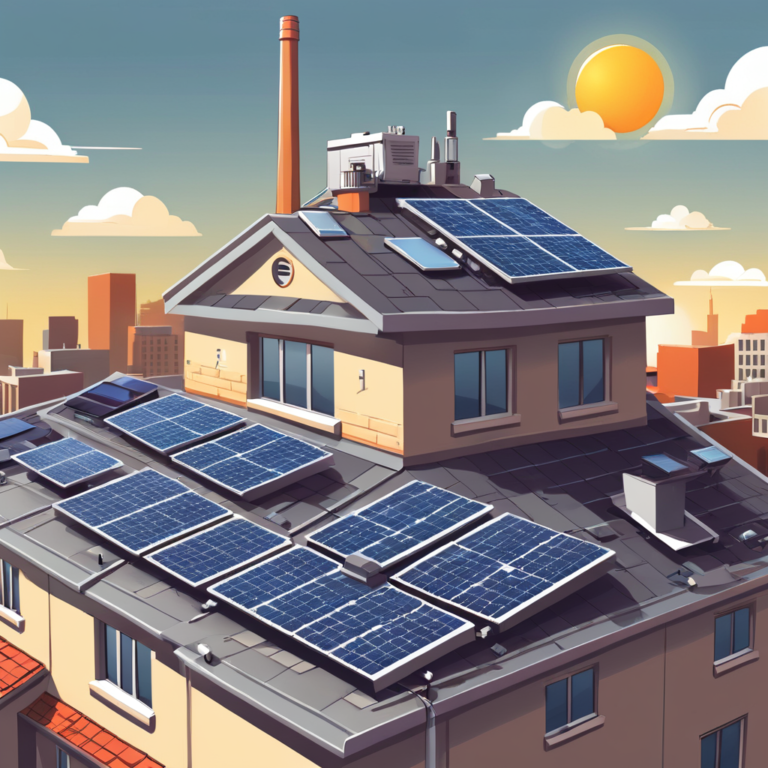
Give me some sunshine
Summary:
Rising maintenance costs in residential complexes strain resident wallets. Investing in rooftop solar power can be a good solution.Solar panels are installed on the complex roof and connected to the common area meter. Net metering credits the complex for generated electricity used against consumption.Grid-connected systems are better for residential complexes. They avoid battery costs and reduce electricity bills.The ideal capacity should not exceed the complex’s monthly consumption to maximize financial benefits. A return on investment calculator can help assess the financial viability of a solar power project for the complex.
Full article:
In indian cities expenses of operating residential complexes are always going up – be it water, electricity or maintenance company costs. This causes significant burden on residents in the form of monthly maintenance expenses. Association elected members are always under pressure to keep the expenses down. Many of these associations have collected significant corpus but the returns on that is effective fixed deposit rate which currently is around 7%. Association Deed of Declaration (DoD) does not allow to invest in growth assets like Mutual funds.
Would it be financially prudent to invest portion of corpus (or build new corpus) to invest in roof top solar power?
Let’s first understand how solar power works in context of residential apartment:
Basics
Solar panels are installed on rooftop of your residential complex to get maximum sunlight (shadow areas are a no-go). They are connected using a special meter approved by your electricity supplier (e.g. BESCOM in Bengaluru) to the residential complex common area meter (not individual homes).
Is off-grid or grid-connected better?
Off-grid: Solar power setup is not connected back to your electricity provider grid. The electricity you produce is stored in batteries for consumption later to a fixed load like your residential society street lights. It is more expensive as batteries cost are added up. It can work for small societies. Benefit is you don’t need any approvals from electricity provider.
Grid-connected: Solar power setup is connected back to electricity grid provided meter. There is a special meter installed that calculates difference between electricity produced and consumed. This is basis for your electricity bill calculation and is called Net metering. This is mostly used by residential associations as it doesn’t need batteries and also reduces your electricity bill.
What is Net metering?
Net metering is basically your consumption minus your electricity production calculated on a monthly basis. This means that you don’t need to use all the electricity produced at the same time it is produced. Basically all electricity produced is fed to the grid so anyone on grid network can use it. And you get credit for it. Whatever you consume at any point of time during the billing cycle is debited from it. So at the end of billing cycle your credits and debits are calculated and bill is generated.
Electricity bill calculation = Monthly electricity consumed by your common area utilities (e.g. lights, lifts, motors etc) subtracted by monthly electricity generated by solar panels. Example: if your common area monthly unit consumption is 5000 units and your solar panels are generating monthly 4000 units electricity then your electricity bill will be only 1000 units (5000 – 4000).
In case your solar setup generates more electricity than your monthly consumption then your electricity provider will pay you monthly at a fixed price. E.g. BESCOM (Bengaluru) has purchase price of ~₹3 per unit (as of Feb,2024).

How much capacity can be installed in the residential complex?
Capacity will depend on the space your apartment complex has. Space that is unhindered without any shadows would be needed. Also check your power consumption. Typically an apartment complex will have multiple electricity meters for common areas. Prefer the common area meter(s) that has highest electricity consumption and invest in the total capacity not exceeding your monthly consumption. You can split the solar power generated to multiple common meters and keep each meter power generation is lesser than it’s consumption. This is because the buying rate of electricity (all the electricity that exceeds your monthly consumption) is purchased at a low rate (Bengaluru is ~₹3/unit). So financially it is not prudent to generate more solar power than your monthly electricity consumption.
What are the key cost components in a roof top solar panel project?
- Photovoltaic panels that actually generate current from solar radiation
- Inverters (DC to AC): There are mainly 3 types in the market: Micro,String,Power Optimized. More on this later
- Wiring/cabling
- Two way electricity meter
- Civil work to mount the panels (may require elevated structure)
- Power purchase agreement with electricity supplier (grid distribution)
Can solar power be provided in individual apartments in residential complex?
No. When you install rooftop solar power in residential apartment complex, it is installed in common rooftop which is shared area. So electricity generated is linked to a society electricity meter (common area utilities like lifts, motors, lights etc). All electricity generated is adjusted against the specific meter/connection it is linked to.
Can solar power replace need of backup generator sets in buildings at least during day time?
No. If your electricity supplier(grid) has cutoff electricity then solar power generation also would be down as it is grid connected. So effectively the longer the power cuts in your apartment lesser the grid connected solar power generation. If you are opting for off-grid solution (with battery) then probably you can use the battery backup.
Who are the top vendors in India for rooftop solar installation? What to look for in a vendor?
There are many like Tata Solar, ORB Energy, U-Solar.
Key parameters to evaluate and compare vendors:
– Pricing: When comparing price compare all inclusive price including structure/elevated structure installation, subsidy, grid supplier liasion charges etc.
– Warranty: 25 yrs power generation warranty on EV panels are quite common. But also evaluate warranty on active parts like inverters, cabling etc.
– Reputation and financial aspects: Since solar project would last for 20+ years do evaluate which vendors have probability to be in business for so long. No brainer is names like TATA but do look for vendors that are backed by strong names.
– Execution track record: Review references provided.
– O&M cost: Typically solar panel installation requires only panel cleaning regularly which can be outsourced to your existing maintenance provider (property management service). But still compare O&M charges in case needed.
Ok – what about financial return?
We have built a simple return of investment calculator that will help you get started on the business case. Here is the link:
https://blog.bettercommunities.in/roof-top-solar-power-return-of-investment-roi-calculator-for-residential-apartments-complex-rwas/




